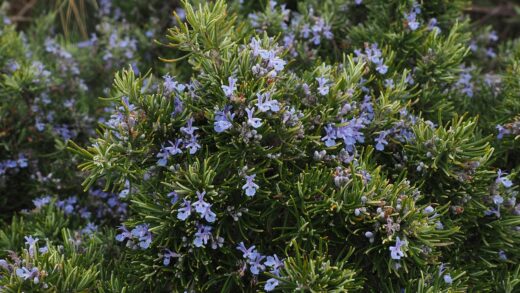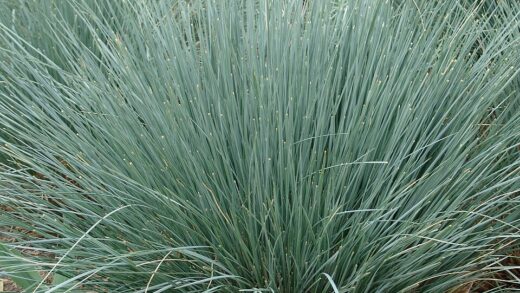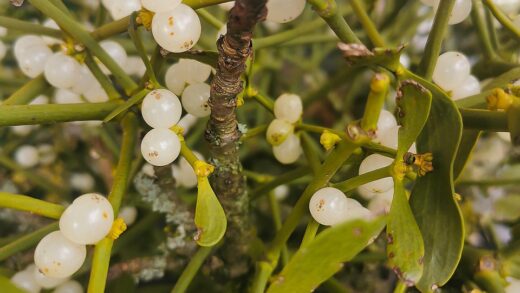Pruning is a fundamental and transformative horticultural practice in the cultivation of regal pelargoniums, serving as a vital tool to shape the plant, manage its size, and, most importantly, stimulate the vigorous new growth that will produce the following season’s flowers. Unlike a gentle trim, the primary pruning of a regal pelargonium is a decisive, annual event that prevents the plant from becoming woody, sparse, and unproductive. A proper cutting back not only rejuvenates the plant but is also intrinsically linked to its long-term health and flowering capacity. Embracing this process, rather than shying away from it, is a key step that separates the casual keeper from the dedicated cultivator of these magnificent specimens.
The primary reason for pruning a regal pelargonium is to encourage a desirable growth habit. Left to their own devices, these plants have a tendency to become „leggy,“ developing long, woody stems with foliage concentrated only at the ends. This results in a sparse, unattractive plant with reduced flowering potential, as blooms are primarily produced on new, green growth. A strategic, hard prune forces the plant to break dormancy from lower nodes on the old wood, stimulating the growth of multiple new shoots. This process leads to the development of a much denser, bushier, and more compact plant structure, which is not only more aesthetically pleasing but also provides a greater number of stems for flower production.
The timing of this main pruning event is critical to the plant’s annual life cycle. The ideal window for a hard prune is in the late summer or early autumn, typically after the plant has finished its primary flowering display for the season. Pruning at this time gives the plant a chance to heal and recover before it enters its winter dormancy. It also prepares the plant for overwintering by reducing its overall size, making it much easier to manage in a limited indoor space. Pruning too early, while the plant is still in full flower, will sacrifice the remainder of the season’s blooms. Pruning too late, in the middle of winter, can stimulate weak growth at a time when the plant should be resting.
The equipment you use for pruning is simple but important. You will need a pair of clean and sharp secateurs, bypass pruners, or a sharp horticultural knife. It is essential that your cutting tool is sharp to ensure clean cuts that heal quickly, rather than crushed stems that can be an entry point for diseases. It is also a vital sanitation practice to sterilize your tools before you begin, especially if you are moving between different plants. Wiping the blades with rubbing alcohol or a dilute bleach solution is a quick and effective way to prevent the spread of pathogens like bacterial blight or fungal spores.
When making your cuts, the general rule of thumb for the annual hard prune is to reduce the main stems by about one-third to one-half of their total length. Each cut should be made about 5-10 millimeters above a leaf node, which is the small bump on the stem where a leaf emerges. It is often recommended to make the cut on a slight angle, slanting away from the node. This allows any moisture to run off, rather than pooling on the cut surface. Prioritize removing any weak, spindly, or crossing stems completely, aiming to create an open framework of strong, well-spaced branches.
Weitere Artikel zu diesem Thema
The technique of the hard prune
The annual hard prune can feel daunting, as it involves removing a significant portion of the plant’s growth. However, it is the single most important pruning activity for the long-term health and floriferousness of your regal pelargonium. Begin by assessing the overall structure of your plant. Identify the main, established stems that form its primary framework. Your goal is to shorten these stems significantly to encourage new growth from the base and along the remaining woody sections. This is a process of renewal, removing the old, tired growth to make way for the new.
Take your sterilized, sharp secateurs and, one by one, cut back each of the main stems. A common guideline is to reduce their length by half, or even by two-thirds if the plant is particularly old and leggy. Look for outward-facing nodes along the stem and make your cut just above one of them. Cutting to an outward-facing node encourages the new shoot to grow outwards, which helps to create a more open, vase-like shape and improves air circulation through the center of the plant. This is preferable to encouraging inward-growing shoots that can lead to a congested and tangled mess.
During this process, you should also be selective and remove any undesirable growth entirely. Cut out any stems that are particularly thin and weak, as they are unlikely to produce strong growth or flowers. Remove any stems that are crossing over others or growing back towards the center of the plant. The aim is to create a clean, open structure. After the main stems are shortened, you may also choose to strip off most of the remaining leaves. This „defoliation“ further reduces the risk of pests and diseases carrying over through the winter and directs all of the plant’s energy into its dormant buds.
Once the hard prune is complete, the plant will look quite stark, perhaps like a small collection of bare sticks. This is normal and expected. This severe cutback is precisely what is needed to reset the plant for the next growing season. It dramatically reduces the amount of foliage the plant needs to support during the low-light winter months and sets the stage for a dense flush of vigorous, new, flower-bearing shoots to emerge from the old wood in the spring. This is a classic example of taking one step back to take two steps forward in the plant’s development.
Weitere Artikel zu diesem Thema
Pinching and shaping
Beyond the single, annual hard prune, a secondary type of pruning known as „pinching“ or „stopping“ is used to refine the plant’s shape and maximize its flowering potential. Pinching is a much lighter form of pruning that is done during the active growing season, primarily in the spring. It involves removing the very tip of a growing stem, usually just with your fingertips or a small pair of snips. This action removes the apical bud, which produces hormones that suppress the growth of side shoots further down the stem.
The purpose of pinching is to encourage branching. When the growing tip is removed, the dormant buds located in the leaf axils below the pinch are stimulated into growth, each one forming a new side branch. By strategically pinching the new shoots that emerge in the spring after the plant breaks dormancy, you can effectively double the number of growing stems. A plant with more stems will naturally be fuller, bushier, and, most importantly, will have the capacity to produce a far greater number of flowers, as each new stem tip is a potential site for a bloom cluster.
The pinching process should be done early in the growing season. As the new shoots that arise from the old wood reach a length of about 10-15 centimeters, simply pinch out the top 1-2 centimeters of each shoot. You can repeat this process on the subsequent side shoots that develop, although it is important to stop all pinching about six to eight weeks before you want the plant to start flowering. This is because pinching temporarily delays flower formation on that stem, so you need to allow the plant sufficient time to develop its flower buds for the main spring display.
Pinching is not just for young plants or for the period immediately following the winter dormancy. It can also be used throughout the growing season to control the plant’s size and shape. If you notice a particular stem is growing much faster than the others and is disrupting the plant’s symmetry, you can pinch it back to encourage it to branch out and become more compact. This ongoing, light pruning allows you to maintain a tidy and well-balanced plant throughout the year.
Deadheading for prolonged blooming
Deadheading is another essential pruning-related task that is performed continuously throughout the flowering season. It is the process of removing spent or faded flower clusters. While it may seem like a purely cosmetic task to keep the plant looking tidy, deadheading serves a crucial biological purpose. Once a flower is pollinated, the plant’s primary objective is to channel its energy into producing seeds. By removing the fading flower head before it has a chance to set seed, you effectively trick the plant into thinking its reproductive job is not yet done.
This interruption of the seed-production cycle encourages the plant to redirect its energy back into producing more flowers in a bid to successfully reproduce. Diligent deadheading can therefore significantly extend the blooming period of your regal pelargonium and encourage the development of subsequent flushes of blooms. It keeps the plant in a „flowering mode“ for as long as possible. To deadhead effectively, use a pair of scissors or your fingers to snip or snap off the entire flower stalk, tracing it back to the point where it joins the main stem.
Regular deadheading not only promotes more flowers but also contributes to the overall health of the plant. The fading petals of old blooms are very susceptible to botrytis (grey mould), especially in damp or humid weather. By promptly removing these spent flowers, you eliminate a primary food source for this destructive fungal disease, helping to keep your plant healthy and clean. It is a simple, quick task that provides multiple benefits for both the aesthetics and the vitality of your plant.
Make it a habit to inspect your plant every few days during its flowering season and remove any blossoms that are past their prime. This small and enjoyable task pays huge dividends in the form of a more prolific, prolonged, and healthier floral display. It is one of the easiest ways to actively engage with your plant during its peak season and ensure you are getting the absolute most out of its spectacular flowering potential.
Pruning for propagation
The act of pruning can also be directly linked to the propagation of your regal pelargoniums, providing the ideal material for creating new plants. The stems you remove during pruning are perfect for use as cuttings. While the main hard prune is often done in the autumn, and cuttings can certainly be taken then, many gardeners also perform a lighter prune in the spring or summer specifically to gather propagation material. This is an excellent way to multiply your stock or share your beautiful plants with others.
When taking cuttings for propagation, you want to select healthy, vigorous, non-flowering shoots. The ideal cutting is from „semi-ripe“ wood—stems that are firm but not old and woody, and not too soft and new. These stems have the best balance of stored carbohydrates to fuel root growth. Use a sharp, sterile knife to take a cutting about 10-15 cm long, making the cut just below a leaf node. Prepare the cutting by removing the lower leaves and the soft growing tip, as this helps to reduce moisture loss and directs the cutting’s energy towards root formation.
The pieces removed during a spring „pinch prune“ can also often be used as cuttings. Although these „tip cuttings“ are very soft, they can root quite quickly under the right conditions. This is a highly efficient method, as the material you are removing to shape the parent plant is not wasted but is instead used to create a whole new generation of plants. It turns a routine maintenance task into an opportunity for propagation.
Whether you are taking cuttings during a dedicated summer pruning session or using the offcuts from your major autumn prune, the principle remains the same. Pruning provides a sustainable source of high-quality material for increasing your collection. It perfectly illustrates the cyclical and regenerative nature of gardening, where the maintenance of one plant directly contributes to the creation of another. This synergy between pruning and propagation is one of the most rewarding aspects of cultivating regal pelargoniums.



















